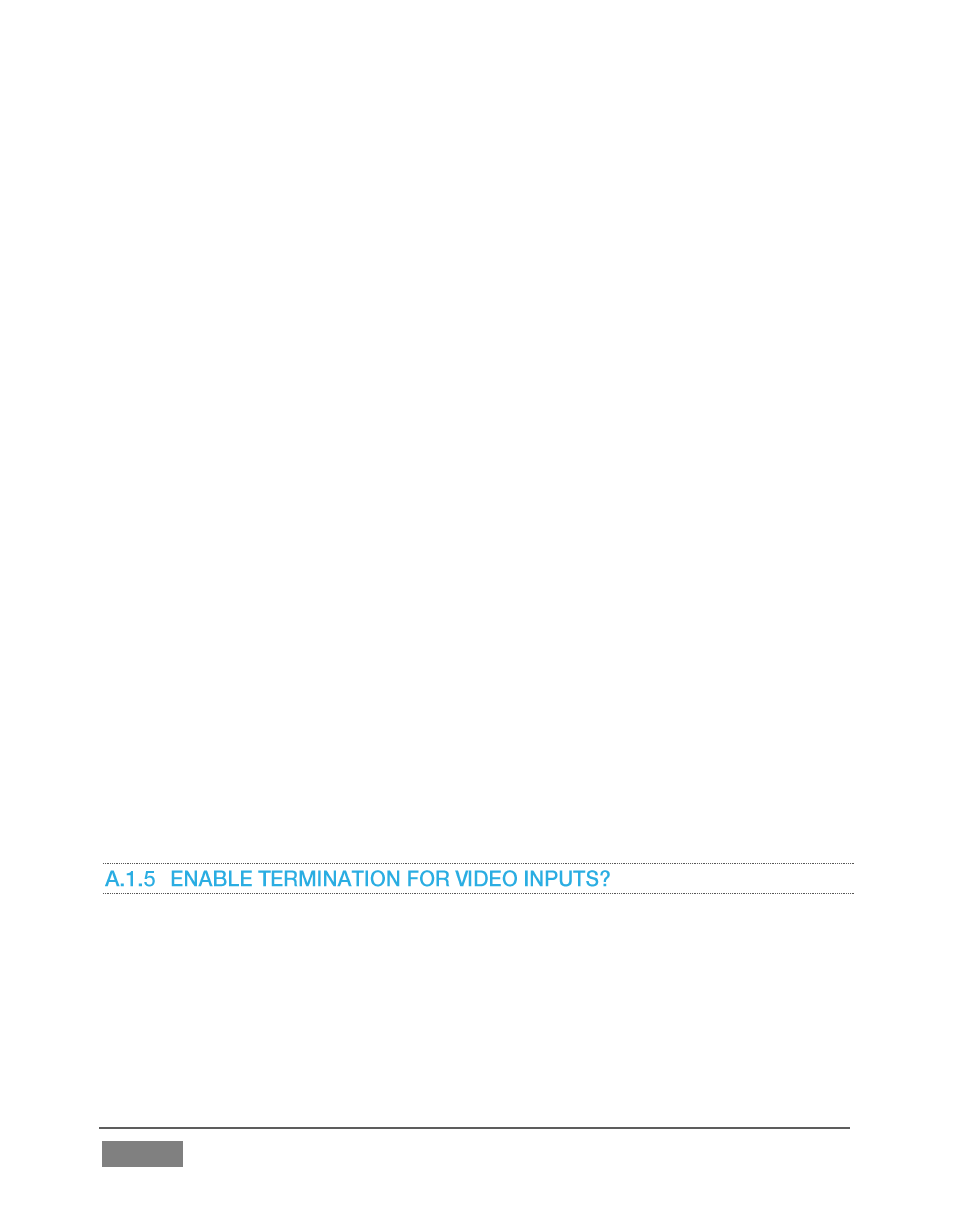A.1.5, Enable termination for video inputs – NewTek TalkShow VS-100 User Manual
Page 88

Page | 80
so that they can communicate. However, RF interference can be a major problem,
especially in an environment such as a trade-show or conference that might entail
numerous competing signals.
Other devices contributing to RF clutter include microwave ovens, cordless phones,
Bluetooth devices, wireless video cameras, outdoor microwave links, wireless game
controllers, fluorescent lights, and so on. These sources can cause significant
interference and signal degradation. Where possible, try to eliminate or minimize the
potential interference in your installation design.
A5: Consider the following suggestions when many conflicting wireless sources are in
the immediate area:
Set the wireless network SSID to any unique name. Choose a name that is
unique to your network and is not shared by other nearby networks or other
networks you are likely to encounter to avoid connection failures, or
unintentionally connecting to other networks sharing the same SSID.
Make sure that the network is not set to ‘hidden.’
If using security, make sure that it is set to WPA2 Personal (AES). WEP is not
recommended for compatibility, reliability, performance, and security reasons.
If possible, configure 2.4 GHz Radio mode to 802.11b/g/n.
If the router supports 5 GHz Radio mode, set it to 802.11a/n.
Channel Settings should be set to 1, 6 or 11 (11 is the most common choice,
since it is the starting channel, making 1 or 6 a good choice).
Channel width should be set to 20 MHz or “Narrow Band” in 2.4 GHz mode.
Channel width should be set to both 20 MHz and 40 MHz in 5 GHz mode.
Ensure that only one DHCP server is active on the network.
TalkShow™ has full-time video termination. If you need to loop through (or t-off from)
other video devices (such as an external monitor) prior to TalkShow in your video
pipeline, you should ensure termination is OFF for earlier devices.